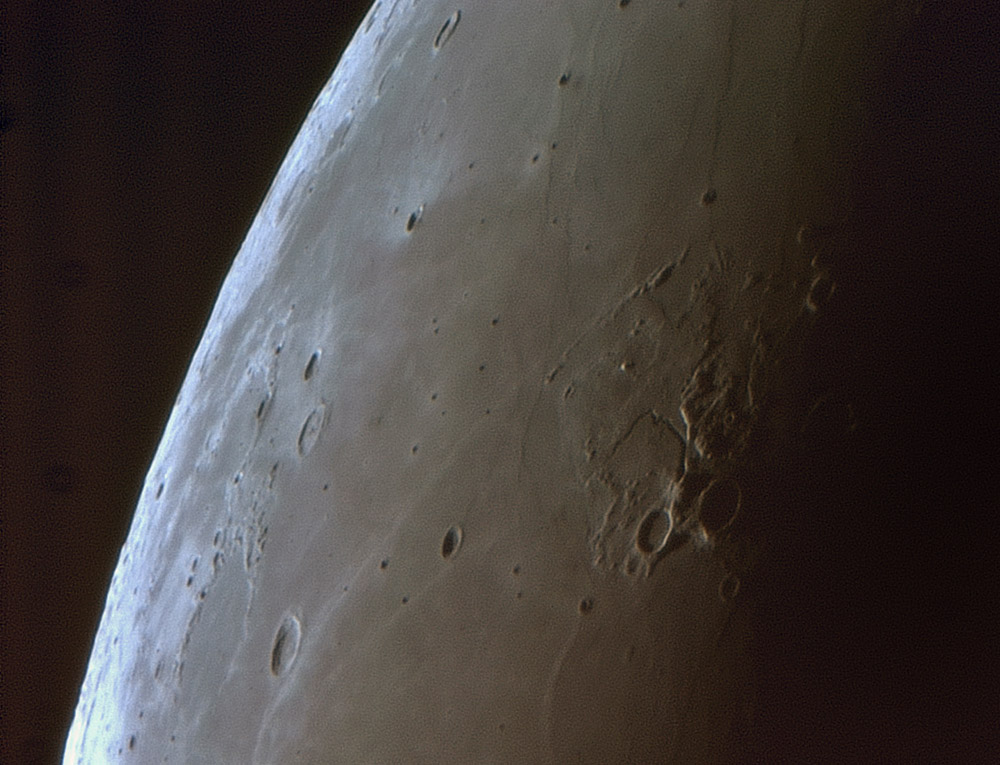Difference between revisions of "July 21, 2012"
| Line 16: | Line 16: | ||
<br /> | <br /> | ||
<hr /> | <hr /> | ||
| + | <!-- Removed reference to store page --> | ||
| + | </div> | ||
| + | ---- | ||
| + | ===COMMENTS?=== | ||
| + | Register, and click on the <b>Discussion</b> tab at the top of the page. | ||
| + | <hr> | ||
| + | You can support LPOD when you buy any book from Amazon thru [[Support_ LPOD|LPOD]]! | ||
| + | <span style="font-size:88%"> | ||
| + | <center> | ||
| + | Contributions to http://www2.lpod.org/ are licensed under a Creative Commons Attribution No-Derivative-Works Non-Commercial 3.0 License. [http://www.creativecommons.org/licenses/by-nc-nd/3.0 http://www.wikispaces.com/i/creativecommons/by-nc-nd_3.0_80x15.png]<br> | ||
| + | </center> | ||
| + | </span> | ||
Revision as of 20:10, 31 January 2015
Chocolate Moon

image by Maximilian Teodorescu, Dumitrana, Romania
I don't often observe a waning crescent Moon because of the inconvenient time of its visibility. Plus my eastern view is diminished by street lights, buildings and sky-blocking hills. But Max got up early last week for the Jupiter occultation and imaged the Moon once the distracting little planet moved out of the picture. I like this image for a couple of things it shows. First, the highlands seen along of limb are really much brighter than the maria. The entire Moon is rather dark and even the highlands have albedos (reflectance) of only 18% to 24%, whereas mare lavas are typically just 7% to 10%. Second, the Cobra Head, the beginning of Schröter's Valley, really is a small mountain. You can see that here, and with the LRO QuickMap measure its height at 1.7 km. Third, while still on the Aristarchus Plateau you will notice an isolated bright peak called Herodotus Mountain. This triangular peak rises 900 to 1500 m above its surroundings. I don't know if its brightness is entirely due to its faceted sides that strongly reflect light or if its composition makes it light-hued. There are other things of interest in this image, including a bent ray and an abrupt albedo boundary but you can discover them yourself.
Chuck Wood
Technical Details
July 15, 2012, 02:38 U.T. C 11 telescope @F/10, DBK 41 camera, 300/1500 frames, Seeing 3/10
Related Links
Rükl plate 18
COMMENTS?
Register, and click on the Discussion tab at the top of the page.
You can support LPOD when you buy any book from Amazon thru LPOD!
Contributions to http://www2.lpod.org/ are licensed under a Creative Commons Attribution No-Derivative-Works Non-Commercial 3.0 License. 



